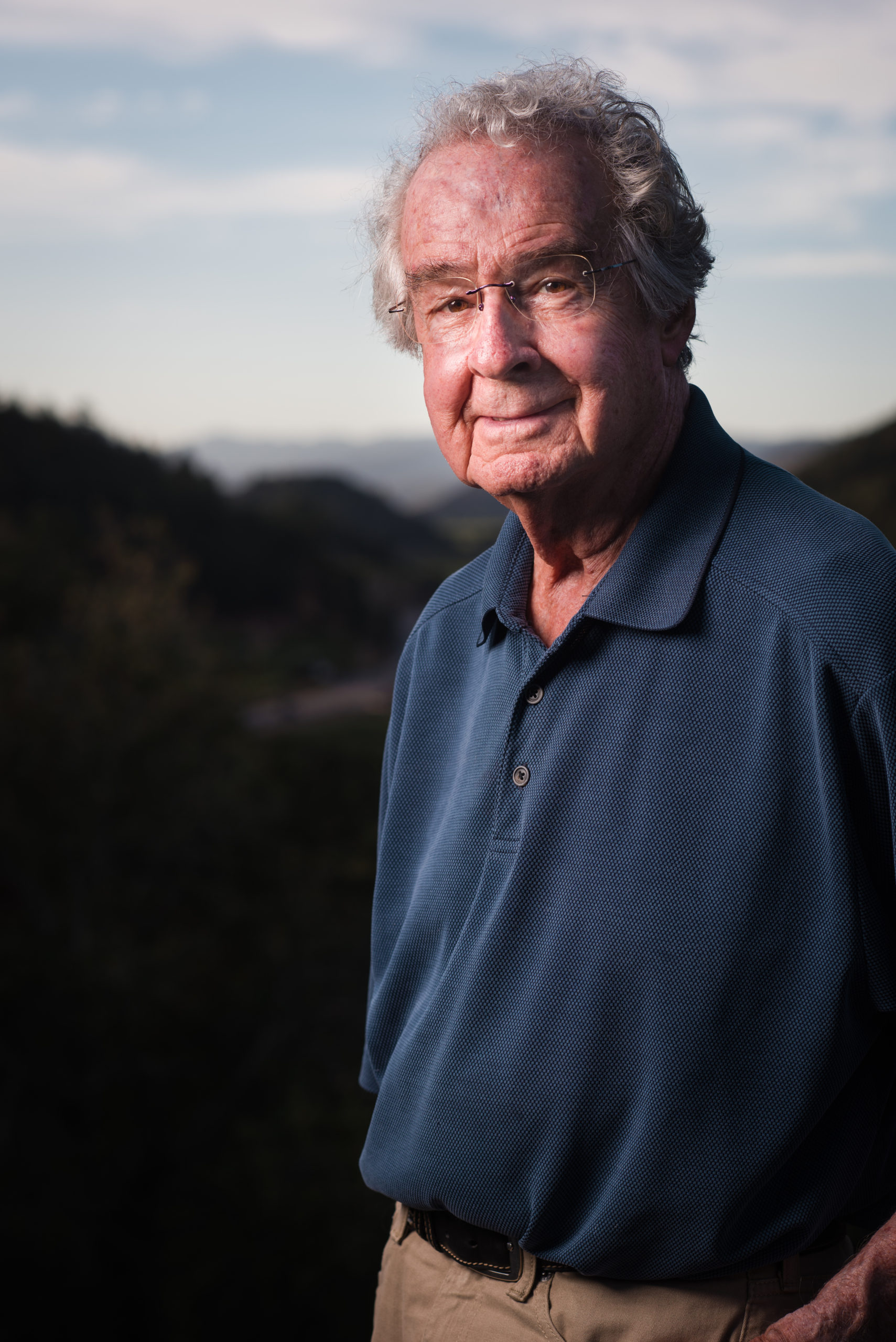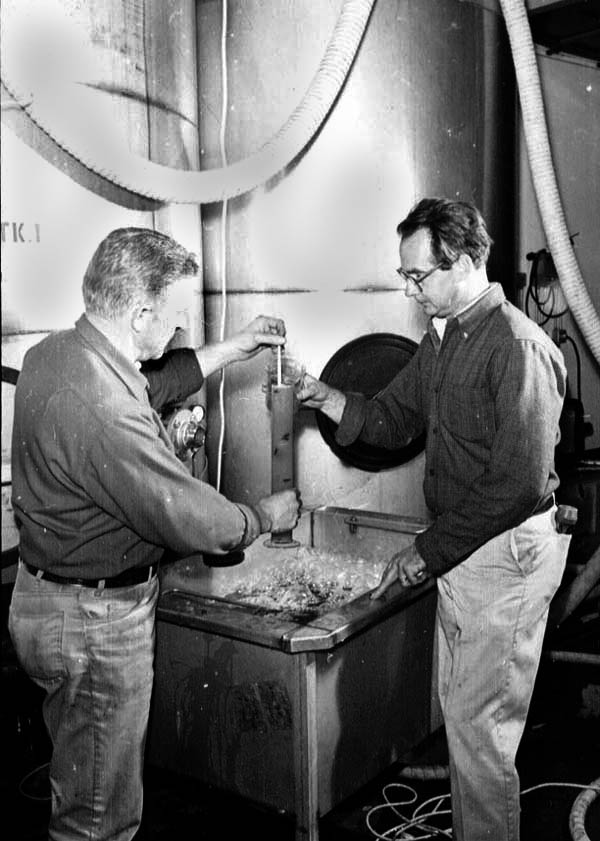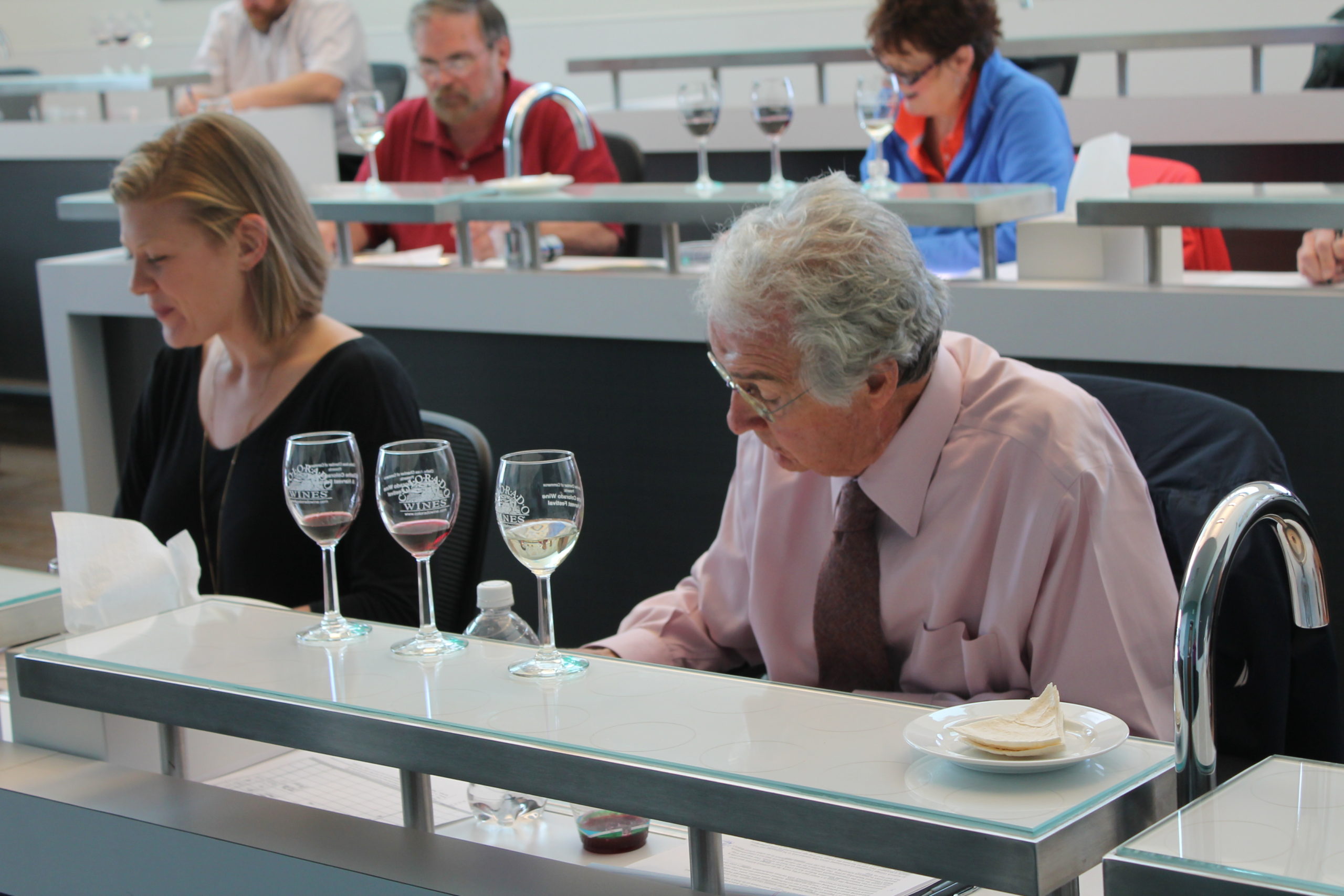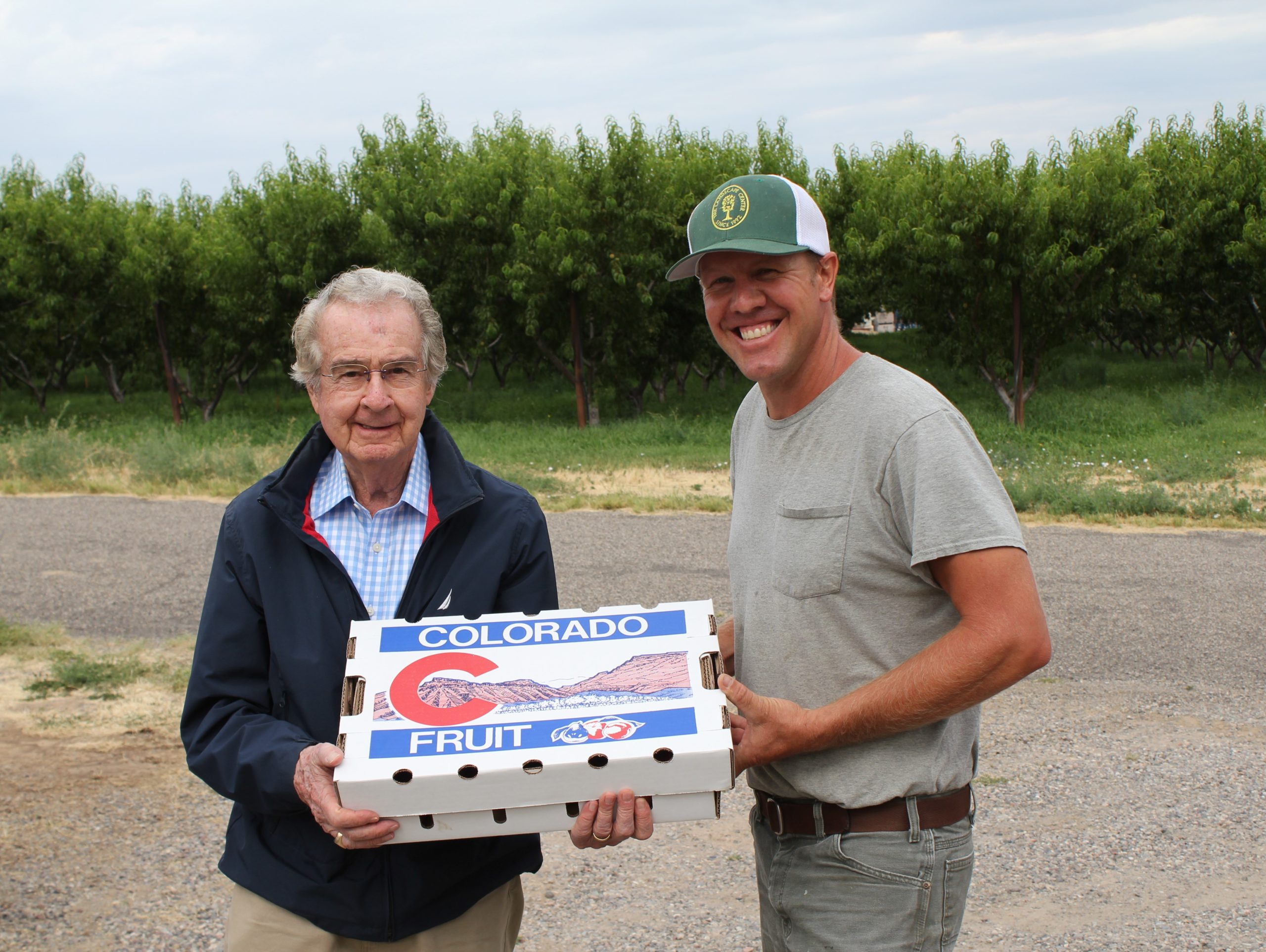by Christina Holbrook
A California Winemaker Hears The Call of the Mountains

The story of how the international world of winemaking was disrupted forever with the 1976 Judgment of Paris is by now the stuff of legend. California winemaker Warren Winiarski, owner of Stag’s Leap Wine Cellars, beat out all of the French Bordeaux contenders with his 1973 Cabernet Sauvignon in a blind tasting originally intended simply to show that California wines were achieving high levels with respect to the great wines of France. Winiarski’s triumph put California wines on the map.
Less known is the account of this same winemaker’s life-long interest in grape growing and winemaking in a decidedly challenging mountainous terroir outside of California. It’s a surprising story spanning five decades, filled with tenacity, passion, collaboration, and friendship. In it, one of the best-known winemakers in the world plays a pivotal and pioneering role in nurturing what is today, against great odds, a highly successful and economically important wine-producing region in the rugged terroir of Colorado.
In 1968, a then unknown young winemaker named Warren Winiarski was invited to Colorado to consult on a pioneering initiative: the establishment of the first modern Colorado commercial winery business with a long-term vision of creating wine made from locally grown Vitis vinifera grape varieties. The challenge, according to Winiarski, was to create “a Colorado wine with a difference.”
The initiative was the brainchild of Denver periodontist Dr. Gerald Ivancie, the son of European parents who’d brought their traditional, home winemaking skills to the new world. These skills were cultivated and further developed by the adult Gerald Ivancie, who—despite a busy dental practice and a large family—made wine as a hobby for his family and an ever-growing number of enthusiastic friends.
Grape vineyards had existed in Colorado’s Grand Valley at the turn of the century but the “fruit grapes” from these vineyards were typically used for juice or jellies, or for non-commercial home winemaking. They were not the “noble grapes” from Vitis vinifera vines known for yielding the great fine wines of Europe. By the 1920’s, most of these fruit vines were torn out and peach trees replaced the grape acreage.

Ivancie’s vision for Colorado was something new: to make and sell a Colorado wine from Vitis vinifera grapes. Urged by friends and family to scale up his enterprise, Ivancie enrolled in an enology class at the University of California Davis where he also developed contacts within the expanding California wine industry.
In a stroke of good fortune, Ivancie was introduced to winemaker Warren Winiarski. Ivancie recognized in Winiarski, fresh from two years assisting Robert Mondavi at his start-up Robert Mondavi Winery in the Napa Valley, several appealing advantages as a potential consultant: he was well versed in the latest California winemaking technologies and he understood the demands and needs of a rapidly expanding new winery business. For his part, Winiarski was intrigued by Ivancie’s ideas. He’d also come to love the rugged Rocky Mountains during the two semesters he’d spent at Colorado A&M (now Colorado State University) in 1949.
Thus began a beautiful partnership.

Gerald Ivancie passed away in 2016, but his son, Steve—a teenager when his father and Winiarski began their collaboration—remembered the great friendship and working relationship between the two men:
“My father brought energy, vision, and passion along with a belief that Colorado’s high altitude could actually benefit fermentation and aging. Warren’s experience at Mondavi and other wineries taught him about the cutting-edge technology and the ideas of the times—taking the best of Europe and marrying it with a new technology. Warren brought knowledge about grapes and soil, plus the enology background. In Warren, my father recognized the scientist and technician. And most important? My father said, ‘I trust him.’”
The two men shared tenacity and a commitment to the integrity of the wine, although their stylistic preferences diverged somewhat. Ivancie was particularly interested in making wines from unblended varietals, while Winiarski was intrigued by Merlot blends. With no local source for Vitis vinifera, Winiarski initially purchased grapes in California and oversaw their shipping to Denver. However, as grape prices increased, the two men determined it was time to put in place the plan to explore the Grand Valley as a source for grapes. Where stone fruit could grow, they surmised, grapes could also grow. Eventually, a win-win deal was struck with several local growers: Ivancie Cellars granted them exclusive supplier status and a guaranteed purchase of the fruit in return for their agreement to plant Vitis vinifera varieties from cuttings imported from California.
But, by the early 1970’s, Winiarski, who had long aspired to his own winemaking venture, had purchased land in Napa with a group of partners. Planting and developing the vineyard at his new venture now required one hundred percent of his time. Ivancie Cellars expanded, but ultimately Gerald Ivancie sold his interest to his partners. Although both men moved on from the project, nonetheless the collaboration between the two spurred the initial plantings of Vitis vinifera in the Grand Valley. In so doing, they provided Colorado’s emerging new wineries with a source for locally grown grapes. Ivancie and Winiarski set the foundation for what would ultimately become a burgeoning wine industry.
“Those early days were satisfying,” recalled Winiarski, “for they planted some of the seeds for what was to come, and I was happy to have contributed my small, originating part. I am grateful to Gerry for giving me the opportunity to share in the fulfillment of his vision and proud to have made a pioneering contribution in the measure of my ability.”
A Return to Colorado
The Colorado winery business experienced tremendous growth and development over the next 45 years, including the designations of two American Viticultural Areas (AVAs), the Grand Valley AVA in 1991 and the West Elks AVA in 2001. The Colorado Association for Viticulture and Enology (CAVE) was launched in 1987, and in 1990 the establishment of the Colorado Wine Industry Development Board signaled that the budding wine “business” had officially developed into a wine “industry.” Currently, Colorado boasts over 170 independent wineries. In addition to producing wine, these wineries have also become an important source of tourism revenue for the state. Today in the Grand Valley, where years earlier Winiarski helped encourage growers to plant some of the first Vitis vinifera vineyards, the Colorado Mountain Wine Fest attracts approximately 7,000 visitors annually.
As the industry grew and became more sophisticated, interest in sharing information in the trade sparked the creation of VinCo, Colorado’s annual education conference and trade show, and the rapid increase in Colorado wine quality sparked the establishment of the Colorado Governor’s Cup wine competition. Leaders in Colorado’s wine industry were eager to have Winiarski play a role in both.
In recognition of the high esteem in which he is held in the world of winemaking and, more specifically, of his pioneering contribution to Colorado’s modern wine industry, Winiarski was invited to serve as a judge for the newly inaugurated Governor’s Cup Wine competition in 2014. Winiarski was more than happy to accept: “I came back to Colorado because I love my Colorado, baby.

“And what a thrill it was to see how far and fast Colorado wines have achieved general excellence in all categories!” Winiarski exclaimed. “It is clear that the state’s growers and wineries have learned how to get very good outcomes from the specific challenges of Colorado climate and mountain settings.”
Mike Dunne, a Sacramento Bee food and wine journalist, served as a judge alongside Winiarski at the Colorado Governor’s Cup. “There is a lot of accomplished, confident, and rewarding winemaking going on in Colorado, and judging wines with Warren was enlightening and fun.”
Award-winning winemaker, Jenne Baldwin-Eaton was another Governor’s Cup judge, and like many of her Colorado colleagues, she especially appreciated the knowledge and expertise Winiarski brought to this new competition: “Warren is a huge supporter of Colorado wine and has so much experience; he’s able to envision where a wine is headed in the next five years. During the “Sweepstakes” portion of the judging, he had an image of where the wines we were tasting were headed, and he had a good way of explaining, for example, how the tannin structure would evolve.”
Baldwin-Eaton, who sits on the Board of VinCO, was delighted when Winiarksi agreed to be the keynote speaker at a recent conference. “Everyone has so much respect for Warren. He reminded us that we are an industry and we need to work together: ‘all ships rise with a rising tide.’ The timing for that message was perfect.”
A Historic Partnership
With his return to Colorado for the Governor’s Cup in 2014, Winiarski began to make regular trips around the state, visiting local grape growers and winemakers. Winiarski’s hard work self-educating and his success in the business are well known, thus his visits were highly anticipated and appreciated by local Colorado growers and winemakers. Likewise, Winiarski found joy in exploring the rugged wine growing regions, sharing his knowledge, and continuing to learn. He approached these meetings as a partnership.
Mark Chien, formerly of the Oregon Wine Research Institute, traveled with Winiarski to the remote Four Corners region of Colorado where some growers are experimenting with cold-hardy hybrids but where Vitis vinifera grapes are also grown, despite the challenging conditions. Chien discussed Winiarski’s connection to Colorado:
“Warren Winiarski became famous because his wine beat the great French Bordeaux and won the Judgment of Paris in 1976. But Warren cut his teeth in Colorado and he’s had the desire to circle back and share the wealth of experience he’s gained. What impressed me was that he did not want to come in and tell everyone ‘this is what you need to be doing to be successful.’
“All the great winemakers and growers have a few things in common. One of them is an insatiable intellectual curiosity about what in nature connects to make a great wine, what we call terroir. Warren has that in spades. And then he has this humility—despite his reputation in Napa for having an ego! I think he loves coming back and sharing what he knows.”
In the Four Corners region, Winiarski met with Guy Drew, a winemaker and vineyard owner for over twenty years. The two spoke about the challenges growers and winemakers face, and the goals they all share.
“In California,” Drew noted, “you don’t have the same issues with frost that we have here, so pruning can be done mathematically, systematically, when you want. Here, bud break is typically not until May, with frost still likely—and we had subzero temperatures in October!”
“So you have to adapt your techniques to some unusually challenging circumstances that are specific to Colorado,” Winiarski observed, “to try to reach that goal of maximum uniformity of ripening at time of harvest.”
Drew concurred. “That’s right. Colorado isn’t the only growing area that faces these issues. What’s different about Colorado is that most areas with cold temperature dips probably grow more hybrid grapes. Here we have both, and the fact that most of Colorado’s vineyards grow Vitis vinifera makes us unique.”
At Fox Fire Farms in the Four Corners, Winiarski met with owner and winemaker Richard Parry. Fox Fire includes a vineyard and a popular winery and is one of Colorado’s Centennial Farms, having been in Parry’s family for over one hundred years. “Sixteen years ago we started with Vitis vinifera, but in this particular location the grapes couldn’t survive the winters. Now we grow hybrids, like the white Brianna and Traminette grapes. And both Marquette and Petite Pearl make a lovely red wine.”
Enjoying several selections in the tasting room, Winiarski noted “the wines were outstanding in their own character and refreshingly lovely.”
Parry reflected, “I felt privileged that Warren was here! We discussed that we’re all working towards the same goal, really, uniform ripening. How do you control water and sunshine, and in particular, getting just the right amount of sunlight exposure to your grape clusters for better ripening?”
As winemaker at Sutcliffe Vineyards for nine years, Joe Buckel worked hand-in-hand with growers from the Four Corners to the Grand Valley and recently started his own label, Buckel Family Wines. He recalled a vineyard tour with Winiarski in 2017:
“It was great having somebody out here of Warren’s caliber. He is a vineyard owner … and has helped us to show growers ‘you are growing an end product, you are growing wine and not a commodity.’
“He offered some wonderful gems like when to water, when to hold back and how that influences wine quality.” Winiarski also helped identify a mite affecting a plant with stunted growth. “Everyone was having trouble deciphering the problem. It might have come from dust, maybe from traffic on the nearby unpaved road or our vineyard roads. He has seen so much over his career, has knowledge of different diseases, and he knows what labs to send stuff to, to help determine the problem.”
Buckel resisted any suggestion that Winiarski pushed his own personal taste or approach on local growers and winemakers:
“Warren understands that to come off harsh with growers you might risk sealing up the lines of communication. Instead, he moves in the direction of giving people information, letting them make their own decisions. That’s where he’s been a massive asset.”
Afterwards, Winiarski joined Buckel in the winery during a racking of the new vintage.
“In the winery, I never got specifics from Warren,” said Buckel. “He tried some wine we were racking, maybe a Cabernet Sauvignon, and he was interested in what we were doing. He gave us some hints, alluded to some of the things they did in their cellars. That was it. In the end, I think we got the seal of approval—and that felt great.”
The majority of Colorado’s wine grapes—close to 80 percent—are grown in the Grand Valley, one of the state’s two AVAs. Here vineyard owner Kaibab Sauvage grows grapes on more than sixty acres and provides grapes to twenty-six of the state’s wineries. Sauvage’s conversations with Winiarski, in 2016 and 2018, led him to reconsider his business model.

“Have you heard of the ‘Iron Circle’? That’s the relationship between growers and winemaker where there is often a disconnect. Warren and I discussed this at length. Growers are looking at the cost of goods, and want to grow the maximum amount of grapes. But larger quantities mean producing average fruit—which won’t work for winemakers who want to make great wine. To me, the answer was vertical integration. So, Savage Spectrum winery is now one hundred percent estate grown, with control from grape to glass, allowing us to deliver a quality wine at a great price.”
“I was also really influenced by Warren’s focus on community,” he added. “When we decided to build a winery, we created enough space and bought enough equipment so we could offer these services to other wineries that might be just starting out. We also donate grapes to Jenne Baldwin-Eaton’s new program in Viticulture and Enology.”
Winiarski’s visits gave him the opportunity to see where the road was leading Colorado growers and winemakers. Ivancie and he had laid only the first paving stones of that road, and he was pleased to discover that these younger generations of winemakers “have formed their lovely, authentic voice for the place that they are in. They have not aimed to duplicate, with their varietal wines, the varietal ‘look’ that belongs to other places and climates.” In an interview for the Summit and Vail Dailies in Colorado following the 2016 Governor’s Cup judging, Winiarski noted, “I am very impressed. (Today’s Colorado winemakers) are identifying something unique and distinctive…These winemakers have a sense of how their grapes’ distinctiveness will express themselves in wine.”
A Lasting Contribution To Colorado Wine
What has Warren Winiarski’s impact been on the modern Colorado wine industry? Those who’ve rubbed shoulders with him in Colorado’s vineyards or cellars say it best:
“My father met Warren Winiarski at the right time,” reminisced Steve Ivancie. “Warren brought skill, experience and an innovative way of looking at things. For Warren and my father, it was a ‘Mind-Meld.’ Warren saw the beautiful vision my father had: to market wine in Colorado, to start a new industry based on quality and integrity. They had a love of sharing things with others. The success of Colorado wine came from this synergy. “
Mark Chien added, “Circling back to Colorado was something special and unique that only Warren Winiarski could do. He is the only person of his stature that has this particular association with Colorado. Good for him!
“Figuring out your voice, your style—that’s what Warren did for California, it’s something we can learn from him,” noted Kaibab Sauvage. “And doing that here in Colorado is going to be paramount, the key to our success. We need to prove ourselves and we are doing just that.”
Christina Holbrook is a writer for the Summit Daily in Frisco, Colorado. Her series of articles on Colorado wine and winemakers has appeared in the Summit Daily, Vail Daily and the Post Independent. She is the author, with photographer Marc Hoberman, of Winelands of Colorado (London/Cape Town: Hoberman Books, 2017).
SOURCES:
Baldwin-Eaton, Jenne. Conversation between Christina Holbrook and Jenne Baldwin-Eaton. Baldwin-Eaton was winemaker for Plum Creek Cellars (1994-2016), where she won numerous awards, and is currently lead instructor of the first Colorado AAS in Viticulture and Enology, at Western Colorado Community. The conversation took place on July 9, 2020.
Buckel, Joe. Conversation between Christina Holbrook and Joe Buckel. Buckel was the award-winning winemaker for Sutcliffe Vineyards (2008-2017) and is the owner/winemaker of the recently launched Buckel Family Wine (established 2017). The conversation took place on July 7, 2020.
Chien, Mark. Conversation between Christina Holbrook and Mark Chien, Chien is former program coordinator at Oregon Wine Research Institute. The conversation took place on July 3, 2020.
Coloradowine.com. The website for the Colorado Wine Industry Development Board.
Dunne, Mike. Conversation between Christina Holbrook and Mike Dunn. Dunn is the recently retired food and wine columnist for the Sacramento Bee, author of the column “Dunn on Wine.” The conversation took place on July 9, 2020.
Drew, Guy. Conversation between Christina Holbrook and Guy Drew. Guy Drew is the founder of Guy Drew Vineyards. This conversation took place on July 31, 2020.
Holbrook, Christina. Championing Colorado’s Rugged Terrior: The New Generation of Wine Makers. Summit Daily, August 10, 2016 and Vail Daily, September 20, 2016.
Holbrook, Christina. Wine Experts Explore Colorado Soil, Climate, and Terrain. Mountain Town Magazine. Summer 2017.
Ivancie, Steve. Conversation between Christina Holbrook and Steve Ivancie. The conversation took place on June 29, 2020.
Moloney, Michael. History of the Palisade Wine Industry. Journal of the Western Slope. Grand Junction, CO: Mesa State College Historical Society. Spring 1996.
Parry, Richard. Conversation between Christina Holbrook and Richard Parry. Parry is the owner of Fox Fire Farms, one of Colorado’s “Centennial Farms.” The conversation took place on August 10, 2020.
Sauvage, Kaibab. Conversation between Christina Holbrook and Kaibab Sauvage. Sauvage is the owner of Colorado Vineyard Specialists and owner and co-founder with Patric Matysiewski of Sauvage Spectrum Winery. The conversation took place on August 10, 2020.
Tieser, Ruth. Winemen Oral History. Wine Spectator (1991, 1993)
Visitgrandjunction.com. A division of the City of Grand Junction devoted to the marketing of the area to visitors.
Winecolorado.org. Website for the Colorado Association of Viticulture and Enology.
Winiarski, Warren. Conversations and review with Christina Holbrook. From June through August of 2020.
Winiarski, Warren. Introduction to Winelands of Colorado. Marc Hoberman and Christina Holbrook. London/Cape Town: Hoberman Books (2017)